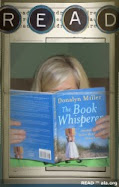Nuance. I like the word. According to the
Free Online Dictionary, the term means
subtle or slight
degree of difference, as in meaning, feeling, or tone; a gradation.
In our Common Core standards, we teach words nuances. Take a look:
ELACCKL4d. Distinguish shades of meaning among verbs describing the same general action (e.g., walk, march, strut, prance) by acting out the meanings.
ELACC1L5d. Distinguish shades of meaning among verbs differing in manner (e.g., look, peek, glance, stare, glare, scowl) and adjectives differing in intensity (e.g., large, gigantic) by defining or choosing them or by acting out the meanings.
ELACC2L5b. Distinguish shades of meaning among closely related verbs (e.g., toss, throw, hurl) and closely related adjectives (e.g., thin, slender, skinny, scrawny)
ELACC3L5c. Distinguish shades of meaning among related words
that describe states of mind or degrees of certainty (e.g., knew, believed,
suspected, heard, wondered).
In grades 4-5, we are further taking those shades of meaning and looking at using the relationship between words to help make and convey meaning.
ELACC4L5c . Demonstrate understanding of words by relating
them to their opposites (antonyms) and to words with similar but not identical
meanings (synonyms).
ELACC5L5c. Use the relationship between particular words
(e.g., synonyms, antonyms, homographs) to better understand each of the words.
I have been thinking a lot about nuances lately. I think we are really talking about word choice. How does it affect us as readers? How can we use it effectively in our writing?
I made an unexpected connection when I heard this song in the car the other night. Watch and see if you can guess my connection. (Scroll down for an explanation!)
This upbeat, happy song can be used to illustrate the power of the perfect word. The singer-writer-artist would not settle for just any old color to convey how special the object of the song is. She was on a mission to find the perfect color, in much the same way that writers must carefully choose their words to elicit a certain feeling in readers. Cool, huh?
I wrote a lesson based on this song. Check it out
here if you are interested!











